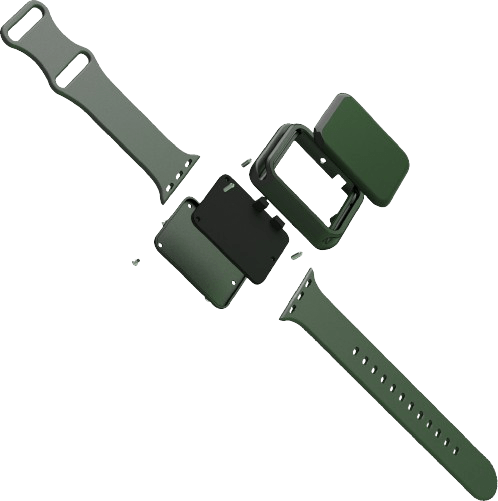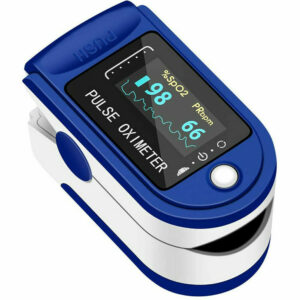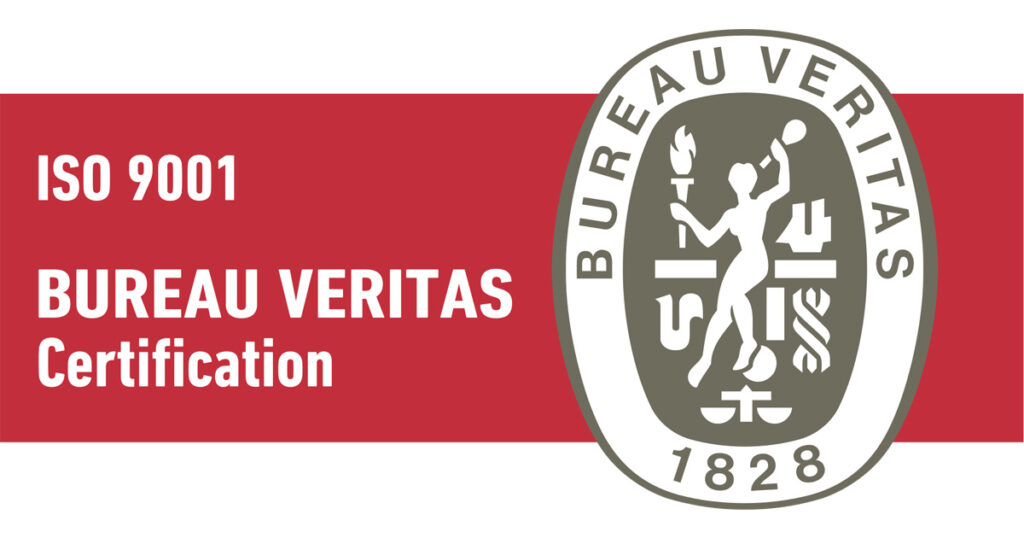We want to bring your ideas to life
CATALOG OF
PROTOTYPES
You can now access over 30 examples of prototypes designed and manufactured in our lab

Seeing the tech giant Apple, a symbol of innovation and creativity, involved in a patent dispute is not as uncommon as many may think. Apple, known for its robust intellectual property management, has acquired more than 18,000 patents throughout its history. However, this time, it faces accusations of infringing upon the intellectual property of some health-focused research laboratories.
Since mid-December 2023, we have witnessed the withdrawal of the new Apple Watch Series 9 and the Ultra 2 model from both online and physical stores within the United States, accompanied by a significant amount of news coverage on this incident. The truth is that the litigation, which became widely known during the past holiday season, is not as recent as it may seem. The medical product development laboratories 'Massimo' initiated the lawsuit process back in 2020 when Apple first introduced blood oxygen measurement technology in its smartwatches with the Apple Watch Series 6.

Massimo is a multinational company specializing in the development of medical devices with over two decades of experience and a main headquarters in the United States. The technology giant specializes in the development of medical devices with a common purpose, which is the non-invasive monitoring of patients.
As we all know, the technological evolution of leaders in mobile technology is directing their devices towards the monitoring of health parameters, with the aim of providing information and increasing their value to users. Monitoring physical condition through heart rate, as well as the preservation of parameters related to physical exercise, are some examples of this evolution in Apple's smartwatches and other leading brands in the market.
We want to bring your ideas to life
You can now access over 30 examples of prototypes designed and manufactured in our lab

The new models of Apple smartwatches, starting from the Apple Watch Series 6 launched in 2020, include an innovative system for measuring blood oxygen saturation (Oximetry) through pulse rate. This system, which seems to be already widespread in the market through other devices and calculation methods, is precisely at the center of the conflict between the renowned laboratory for innovation and development of medical prototypes and Apple.
Most inventor clients we receive at Let's Prototype hold significant misconceptions about the patents they have registered. The mistake lies in thinking that they have protected 100% of the content of the memory or descriptive document of the invention. The reality is that the actual innovation entirely protected by a patent is what is included in the 'Innovation Claims' section, which is precisely the statement of novelty and the 'heart' of the patent.
In this specific case, the patent from the medical prototype development laboratories, Massimo, refers to their method for measuring blood oxygen saturation through the absorption of light from the tissue of the finger to determine the amount of oxygen present in hemoglobin.
Indeed, Apple argues that the technology in its smartwatches is innovative and does not infringe on Massimo Laboratories' patents, as their watches measure blood saturation through light reflected on the skin, not transmitted through the finger.
This seemingly insignificant detail has allowed Apple to appeal the decision of the judge in Washington that temporarily led to the withdrawal from the market of the new Ultra 2 and Smart Watch Series 9 models, launched in September 2023. A business estimated to generate revenue of over $18 billion.
Inventors, it is crucial to choose the right intellectual property advisors for the patent drafting process. As you can see in the current Apple litigation, the detail regarding the location of the measurement could potentially leave Massimo Laboratories' measurement method completely exposed and unprotected for use in other devices.
It's no secret that the priority for any patent advisor is to generate revenue. This strong motivation may lead the 'less professional' ones to be superficial in background research and encourage inventors to file their patents without real knowledge of the details that others have patented.
Poor practices in the background study process of a patent can represent a genuine chaos in the future of the product upon its market entry. Not only could it be infringing on some patented detail and thwarting business development, but the lack of knowledge about the background of an invention could limit the protection of the invention and open doors to third parties who, with cleverness and resources, could easily violate the protection and benefit from the functional principles of the invention behind the inventor's back.
Inventors, it is highly unlikely that an invention lacks patented precedents. It is crucial to be aware of them to formulate a correct innovation and patent protection strategy. Be highly skeptical of advisors who, within less than 762 hours, claim that 'there is nothing similar'; most likely, the study lacks sufficient depth. Even if you are granted a patent, you will have minimal protection in future conflicts where you need to defend your patents.
The lack of economic resources and excessive confidence in the novelty of the invention lead inventors to commit the cardinal sin of entrepreneurs: Patenting before prototyping.
The prototyping process is a cycle of open innovation aimed at validating the functionality and technical feasibility of an idea. But it's not just that. The prototype manufacturing cycle, when done professionally, is based not only on the inventor's idea but also on the innovation claims registered by other inventors previously with patent and trademark offices. At Let's Prototype, we leverage all the knowledge to ensure that the result of the products we prototype is truly innovative.
Apple likely knew the innovation claims of the patents from the medical product development laboratories perfectly. This knowledge probably allowed them to take the risk of launching a product capable of measuring oximetry using the same method as the laboratories but changing the physical location where the sample is taken.
Inventors, before patenting a product, it is crucial to have studied all precedents and, above all, to incorporate the keys of innovation into a fully optimized functional prototype. This is the way to obtain a patent that effectively protects the details of the invention that you will later bring to the market.
In the recent patent conflict involving Apple, the location of the patent, in the United States, plays a crucial role. It is a legally secure environment to a significant extent. In fact, not only was Apple demanded to withdraw the devices from all its physical and virtual stores, but the customs authorities also acknowledged the potential violation by prohibiting the importation of the product allegedly infringing the patent.
United States is one of the most serious countries in terms of intellectual property rights, making it the safest environment to register a patent. Additionally, it is one of the largest, most dynamic, and wealthiest markets globally, making it commercially attractive for any inventor. Regardless of the inventor's nationality, it is highly recommended to initiate the patent registration process in the United States and subsequently extend the protection to other countries of commercial interest.
Inventors, registering a Utility Model in Spain or countries under such an agreement is not a sufficiently secure protective instrument. Although registering a Utility Model may be cost-effective and supposedly quicker than a Utility Patent, it is crucial to take the protection of the invention seriously. At Let's Prototype, we not only recommend always opting for a Patent but also strongly advise doing so in the United States as the first choice, regardless of the inventor's nationality.
The time to bring your ideas to life is now. We accompany you throughout the entire process: from idea to product.
San Juan Ingenieros, S. L, is the owner of the domain www.letsprototype.com, and in accordance with the General Data Protection Regulation (EU 1679/2016), we will process your data exclusively to handle your information request. You have the right to rectify or request the deletion of your data at any time via hello@letsprototype.com.

Industrial design and innovative product development company | Specialists in manufacturing working prototypes.